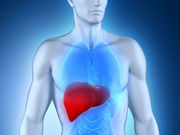Findings can be used to guide liver cancer prevention efforts
FRIDAY, Oct. 6, 2017 (HealthDay News) — Causes of primary liver cancer differ widely among populations globally, but most cases can be prevented, according to a study published online Oct. 5 in JAMA Oncology.
Tomi Akinyemiju, Ph.D., from the University of Alabama at Birmingham, along with colleagues from the Global Burden of Disease Liver Cancer Collaboration, used vital registration and cancer registry data to report on primary liver cancer incidence, mortality, and disability-adjusted life-years (DALYs) for 195 countries or territories (1990 to 2015). The authors present global, regional, and national estimates on the burden of liver cancer attributable to hepatitis B virus (HBV), hepatitis C virus (HCV), alcohol, and “other” causes.
The researchers identified 854,000 incident cases of liver cancer and 810,000 deaths globally in 2015, contributing to 20,578,000 DALYs. Between 1990 and 2015, cases of incident liver cancer increased by 75 percent. Forty-seven percent of this increase could be explained by changing population age, 35 percent by population growth, and −8 percent by changing age-specific incidence rates. For age-standardized liver cancer mortality, the male-to-female ratio was 2.8. Overall, globally, one-third of liver cancer deaths were attributable to HBV, 30 percent to alcohol, 21 percent to HCV, and 16 percent to other causes. However, there was substantial variation between countries in the underlying etiologies.
“Our results show that most cases of liver cancer can be prevented through vaccination, antiviral treatment, safe blood transfusion and injection practices, as well as interventions to reduce excessive alcohol use,” the authors write.
Copyright © 2017 HealthDay. All rights reserved.








